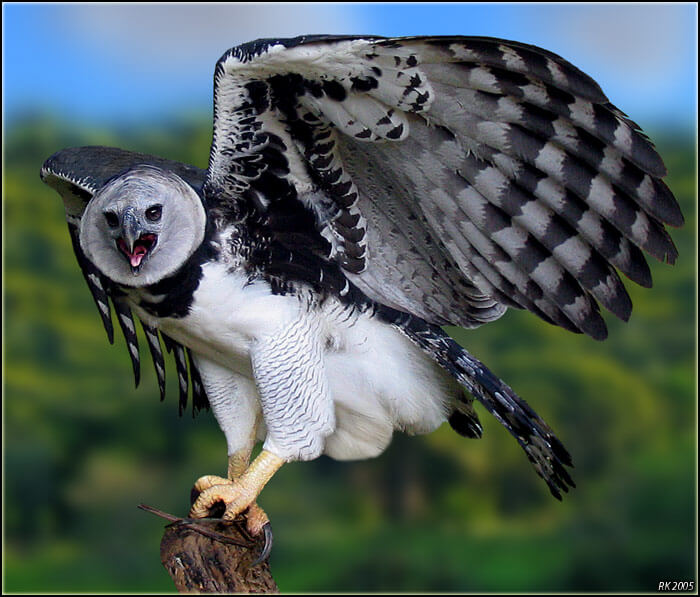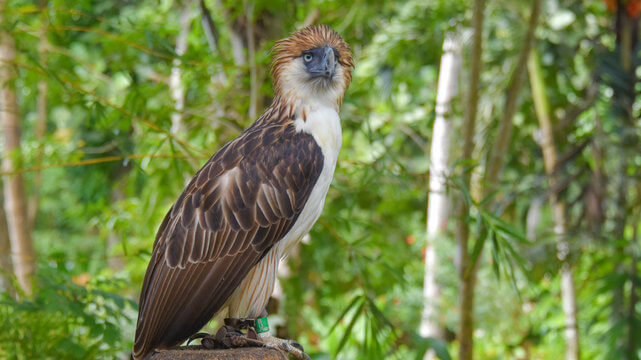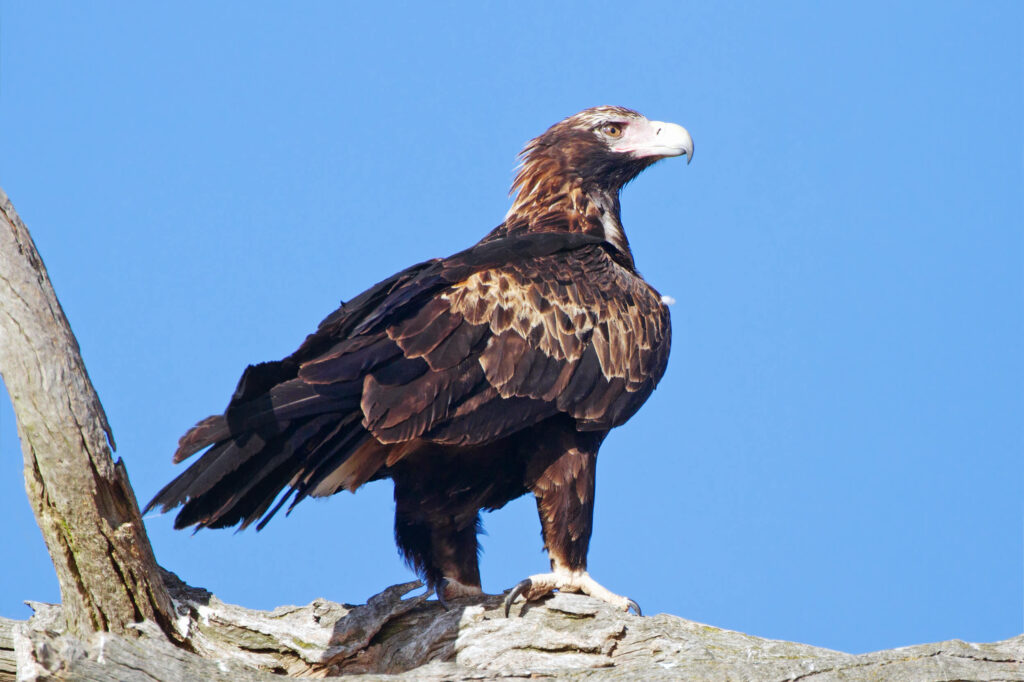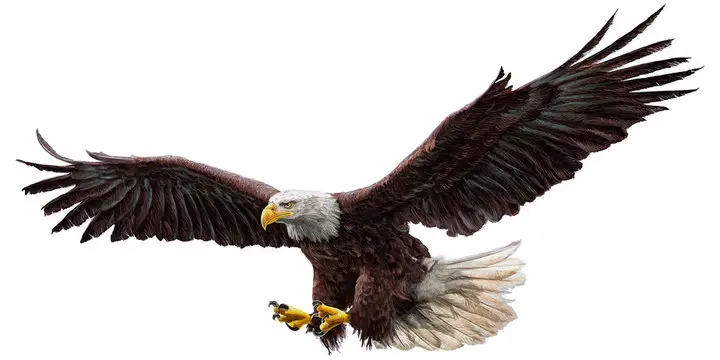Welcome to the awe-inspiring realm of the world’s largest eagles, where majestic wingspans and commanding presence define these magnificent avian predators. From the regal Harpy Eagle of the tropical rainforests to the iconic Bald Eagle reigning over North American skies, these remarkable birds of prey hold a special place in both natural history and human folklore.
Join us on an exhilarating journey as we explore their habitats, behaviors, and unique adaptations that have earned them the title of avian royalty. Discover the fascinating world of these apex predators and gain a newfound appreciation for the grandeur of our planet’s largest eagles.
Largest Eagles in the World
Steller’s Sea Eagle: The Majestic Ruler of Northern Skies

Steller’s sea eagle (Haliaeetus pelagicus) stands as one of the largest and most imposing raptors on the planet, a true icon of the northern coastal regions. Named in honor of the eminent naturalist Georg Wilhelm Steller, this magnificent bird graces the skies with its awe-inspiring presence. With a scientific name that reflects its marine habitat, Haliaeetus pelagicus, the Steller’s sea eagle is not only a symbol of power and grace but also an essential indicator of the health of the coastal ecosystems it calls home.
Habitat and Range:
This sea eagle is primarily found along the coastlines and estuaries of Northeast Asia, particularly in Russia, Japan, and parts of South Korea. It thrives in a diverse range of habitats, from dense coastal forests to remote, uninhabited islands. Steller’s sea eagle is known for its preference for colder climates, often being spotted near ice floes during winter months, which serve as hunting grounds for fish.
Physical Characteristics:
What sets Steller’s sea eagle apart is its sheer size and striking appearance. With a wingspan that can reach up to 2.5 meters (8.2 feet) and weighing in at approximately 5.9 to 9 kilograms (13 to 20 pounds), it is a formidable presence in the avian world. Its plumage is a striking mix of black and white, with the distinctive contrast between its dark wings and tail and its snowy white head and neck. The hooked beak and powerful talons are built for snatching fish from the water, making it an expert hunter.
Feeding Behavior:
As a true sea eagle, Steller’s primary diet consists of fish. It is often seen perched near coastlines, patiently scanning the water below for potential prey. When a suitable target is spotted, it swoops down with remarkable agility, snatching fish with its powerful talons. In addition to fish, these eagles have been known to scavenge and occasionally prey on birds and small mammals.
Conservation Status and Significance:
While Steller’s sea eagle is not currently listed as globally threatened, its population faces various conservation challenges. Habitat degradation, pollution, and disturbances in nesting areas are some of the threats that require continuous monitoring and conservation efforts. As a flagship species for coastal ecosystems, the presence of healthy Steller’s sea eagle populations serves as an indicator of the overall well-being of these critical environments.
In the realm of avian magnificence, Steller’s sea eagle stands as a true testament to the grandeur of nature. Its significance in the ecosystems it inhabits goes beyond its impressive size, making it a vital ambassador for the conservation of coastal habitats. With vigilant conservation measures, we can ensure that this majestic raptor continues to soar the northern skies for generations to come.
Harpy Eagle: Nature’s Winged Apex Predator

The Harpy Eagle (Harpia harpyja) stands as a true marvel of the avian world, known for its imposing size and commanding presence. With a scientific name derived from Greek mythology and an appearance reminiscent of a mythical creature, the Harpy Eagle is a symbol of power and grace in the rainforests it calls home. Let’s embark on a journey into the realm of this magnificent raptor, exploring its habitat, unique characteristics, and vital role in the ecosystems it inhabits.
Habitat and Range:
The Harpy Eagle is a denizen of the dense, lush rainforests of Central and South America. Its range spans from Mexico through Central America to parts of Brazil and Argentina. These apex predators thrive in primary tropical forests, favoring vast, uninterrupted expanses where they can skillfully navigate the dense canopy in pursuit of prey.
Physical Characteristics:
One cannot help but be captivated by the Harpy Eagle’s striking appearance. With a wingspan that can reach up to 2.2 meters (7.2 feet) and weighing between 4.5 to 9 kilograms (10 to 20 pounds), it is one of the largest and most powerful eagles in the world. The distinctive crown of feathers atop its head, combined with piercing eyes and formidable talons, creates an awe-inspiring visage that reflects its status as a top-tier predator in the rainforest hierarchy.
Feeding Behavior:
Harpy Eagles are highly specialized hunters, primarily preying on tree-dwelling mammals such as sloths, monkeys, and opossums. Their hunting technique involves stealth and precision, as they soar through the forest canopy, utilizing their keen eyesight to spot potential prey. When a target is identified, they execute rapid, calculated strikes, securing their quarry with powerful talons. Their exceptional strength enables them to carry prey larger than themselves back to their nests.
Conservation Status and Significance:
While the Harpy Eagle is not currently listed as globally threatened, its population faces significant challenges due to habitat loss and human activities. Deforestation and habitat fragmentation are primary concerns, underscoring the need for concerted conservation efforts to safeguard their habitats. As apex predators, Harpy Eagles play a crucial role in maintaining ecological balance by regulating prey populations, making them an invaluable component of their ecosystems.
In the heart of the rainforest, the Harpy Eagle reigns supreme as a testament to nature’s evolutionary marvels. Its significance goes beyond its physical prowess, embodying the intricate web of life in the lush realms it inhabits. Through vigilant conservation measures and a deeper understanding of their vital role, we can ensure that the Harpy Eagle continues to soar the rainforest skies for generations to come.
The Majestic Philippine Eagle: A Symbol of Conservation Triumph

The Philippine Eagle, scientifically known as Pithecophaga jefferyi, stands as a testament to both the incredible biodiversity of the Philippines and the challenges of conservation in the modern world. Often referred to as the “Monkey-Eating Eagle,” this magnificent bird of prey is a living emblem of the country’s rich natural heritage. In this exploration, we’ll delve into the unique characteristics, habitat, conservation efforts, and significance of the Philippine Eagle.
Habitat and Range:
Endemic to the Philippines, the Philippine Eagle is primarily found in the lush, biodiverse forests across the archipelago. Its range spans across various islands, with Mindanao, Leyte, Samar, and Luzon hosting significant populations. This eagle has a preference for primary and secondary forests, where it can thrive in the complex, diverse ecosystems that the Philippines offers.
Physical Characteristics:
The Philippine Eagle is a truly striking bird. It boasts a wingspan that can reach up to 2 meters (6.6 feet) and weighs between 4.5 to 8 kilograms (10 to 18 pounds). Its striking appearance is characterized by a striking crest of feathers, piercing blue-gray eyes, and a creamy white underbelly complemented by dark brown plumage. These features not only contribute to its regal presence but also serve as effective camouflage in its forested habitat.
Diet and Feeding Behavior:
While the moniker “Monkey-Eating Eagle” might imply a strict diet of primates, the Philippine Eagle is actually an opportunistic hunter. Its diet includes a wide range of prey such as flying lemurs, civets, hornbills, and yes, occasionally monkeys. It is a highly skilled predator, utilizing stealth and precision to capture its quarry from the canopy. The eagle’s powerful talons and sharp beak enable it to subdue and consume even the most elusive of prey.
Conservation Efforts and Significance:
The Philippine Eagle faces significant threats due to habitat loss, hunting, and illegal pet trade. Recognizing its critical status, conservationists and organizations have rallied to protect this iconic species. Efforts include habitat preservation, anti-poaching measures, and community-based conservation initiatives. The Philippine Eagle also holds great cultural significance for the Filipino people, symbolizing national pride, wildlife conservation, and the importance of protecting the country’s natural heritage.
In the heart of the Philippines, the Philippine Eagle soars as a living testament to the country’s incredible biodiversity. Its conservation is not just an environmental endeavor, but a cultural and national responsibility. Through concerted efforts, we can ensure that this majestic raptor continues to grace the skies of the Philippines for generations to come.
The Mighty Wedge-tailed Eagle: Australia’s Apex Avian Predator

The Wedge-tailed Eagle (Aquila audax) reigns as the largest bird of prey in Australia, known for its formidable size and commanding presence. With a scientific name reflecting its audacious nature, this magnificent raptor has earned its place as an apex predator in the vast Australian skies. In this exploration, we’ll uncover the unique characteristics, habitat, behavior, and significance of the Wedge-tailed Eagle.
Habitat and Range:
The Wedge-tailed Eagle is a native of Australia, thriving across a diverse range of habitats. It can be found throughout the mainland, Tasmania, and even in parts of New Guinea. This versatile eagle is equally at home in arid deserts, open woodlands, and mountainous terrain. Its adaptability to various landscapes is a testament to its remarkable ability to find prey in a wide array of environments.
Physical Characteristics:
The Wedge-tailed Eagle is an awe-inspiring bird, boasting a wingspan that can stretch up to 2.8 meters (9.2 feet) and weighing between 3 to 5.5 kilograms (6.6 to 12.1 pounds). Its name is derived from the distinctive wedge shape of its tail, which aids in its impressive aerial maneuvers. The eagle’s plumage varies from dark brown to nearly black, providing excellent camouflage in its natural surroundings. With keen eyesight and powerful talons, it is a masterful hunter.
Diet and Hunting Behavior:
As a true apex predator, the Wedge-tailed Eagle primarily feeds on a variety of mammals, including rabbits, wallabies, and even young kangaroos. Additionally, it may target birds, reptiles, and carrion when opportunities arise. This eagle employs a combination of soaring flight and keen observational skills to spot potential prey. When a target is identified, it executes precise and rapid strikes, using its powerful talons to secure its meal.
Breeding and Conservation Significance:
The breeding cycle of the Wedge-tailed Eagle is a testament to its resilience. These eagles build large, sturdy nests in high locations, often reusing the same site for many years. Breeding pairs display strong fidelity to their nesting territories. Despite their adaptability, Wedge-tailed Eagles face ongoing challenges, including habitat loss and threats from human activities. Conservation efforts are crucial in safeguarding their habitats and ensuring their continued presence as vital components of Australia’s ecosystems.
In the vast expanse of Australia, the Wedge-tailed Eagle stands as a living emblem of the continent’s wild majesty. Its conservation is not just an environmental endeavor, but a testament to the resilience and adaptability of this remarkable species. Through concerted efforts, we can ensure that this mighty raptor continues to grace the skies of Australia for generations to come.
The Regal Golden Eagle: Nature’s Winged Sovereign

The Golden Eagle (Aquila chrysaetos) stands as a true marvel of the avian world, known for its regal bearing and commanding presence. With a scientific name that reflects its magnificent golden-brown plumage, this formidable raptor is a symbol of power and grace in the landscapes it calls home. Let’s embark on a journey into the realm of this magnificent bird, exploring its habitat, unique characteristics, and vital role in the ecosystems it inhabits.
Habitat and Range:
The Golden Eagle is a versatile and adaptable species, found across a vast expanse of the Northern Hemisphere. Its range spans from North America to Europe, Asia, and parts of Northern Africa. These eagles exhibit a preference for open and semi-open habitats, such as grasslands, mountainous terrain, and tundra. They are also known to inhabit forested areas, where they skillfully navigate the canopy in pursuit of prey.
Physical Characteristics:
The Golden Eagle is a truly captivating bird. It boasts a wingspan that can reach up to 2.3 meters (7.5 feet) and weighs between 3.6 to 6.35 kilograms (8 to 14 pounds). Its name is derived from the striking golden-brown plumage that adorns its head and nape, contrasting with the dark brown feathers on its body. This plumage, combined with piercing eyes and formidable talons, creates an awe-inspiring visage that reflects its status as a top-tier predator.
Diet and Feeding Behavior:
As a formidable apex predator, the Golden Eagle primarily preys on a diverse range of animals, including mammals like rabbits, hares, and ground squirrels. Additionally, they target birds, reptiles, and even larger prey such as foxes and young deer on occasion. The eagle’s hunting technique is characterized by a combination of soaring flight and patient observation, allowing it to spot potential prey from great distances. When a target is identified, it executes swift and precise strikes, using its powerful talons to secure its meal.
Conservation Significance:
Golden Eagles hold immense ecological importance as top predators in their ecosystems. They help regulate prey populations, which in turn has cascading effects on the entire food web. However, they face various conservation challenges, including habitat loss, persecution, and collisions with human structures. Conservation efforts, such as habitat protection and mitigation measures, are crucial in ensuring the continued presence of these magnificent raptors in the wild.
In the vast landscapes they inhabit, Golden Eagles reign as icons of wild beauty and power. Their conservation is not just an environmental endeavor, but a testament to the intricate balance of nature. Through concerted efforts, we can ensure that these majestic raptors continue to grace our skies for generations to come.
Frequently Asked Questions!
Ans – The world’s largest eagles belong to the genus Aquila and include the Harpy Eagle, Steller’s Sea Eagle, Philippine Eagle, and the Martial Eagle. These magnificent birds are known for their impressive size and powerful hunting abilities.
Ans – The largest eagles, such as the Steller’s Sea Eagle and the Philippine Eagle, can have wingspans that exceed 7 feet (2.1 meters). They can weigh anywhere from 11 to 20 pounds (5 to 9 kilograms), with females being larger than males in most cases.
Ans – Steller’s Sea Eagles are primarily found in coastal regions of Russia, Japan, and Korea. Harpy Eagles inhabit the tropical rainforests of Central and South America, while Philippine Eagles are native to the Philippines. Martial Eagles are found in various sub-Saharan African countries.
Ans – These eagles are apex predators, meaning they are at the top of the food chain. Their diet primarily consists of large mammals and birds. For example, the Harpy Eagle feeds on monkeys and sloths, while the Steller’s Sea Eagle is known to prey on fish and waterfowl.
Ans – These eagles are skilled hunters and use a combination of stealth, speed, and powerful talons to catch their prey. They often employ a strategy called “perch hunting,” where they sit in a high vantage point and scan the surroundings for potential prey.
Also Read:-
- Types of dragons
- Snakes in Kentucky
- 30 Types of Wild Dogs with Species & Images
- Are Wolves the Ultimate Meat Lovers?
- What do bears eat in the wild?
Conclusion
In the realm of avian magnificence, the world’s largest eagles stand as awe-inspiring symbols of power and grace. From the regal Steller’s Sea Eagle to the majestic Philippine Eagle, each species holds a unique place in the diverse ecosystems they inhabit. Their impressive wingspans and keen hunting skills make them apex predators, crucial for maintaining ecological balance.
Yet, they face significant conservation challenges, underscoring the need for dedicated efforts to protect their habitats. As ambassadors of the wild, these magnificent eagles remind us of the awe-inspiring wonders that nature offers and the importance of preserving them for generations to come.

